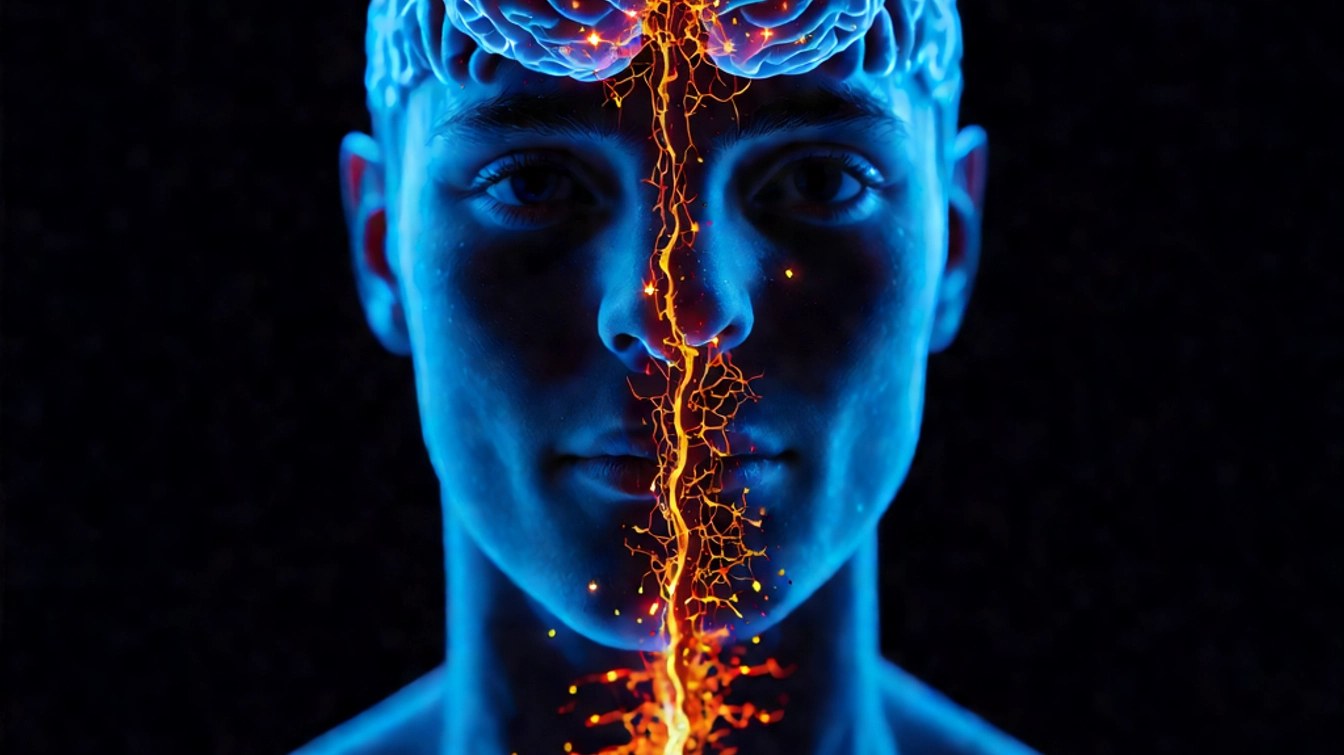When it comes to CNS stimulants is drug class of Modafinil. These drugs, both natural and synthetic, boost brain activity, enhancing alertness, focus, and stamina. Often prescribed for ADHD or narcolepsy, CNS stimulant drugs hold therapeutic value but also pose risks like dependency and cardiovascular side effects. Exploring natural stimulants and their drug class offers insights into safer options, while understanding potential misuse highlights the importance of cautious use. Curious about their effectiveness, safety, and role in treatment? This guide breaks down CNS stimulants and their side effects comprehensively.
What Are CNS Stimulants?
Central Nervous System (CNS) stimulants, the drug class of Modafinil are substances designed to boost your brain’s activity and nervous system response. They’re often employed to combat conditions like ADHD, narcolepsy, and excessive daytime sleepiness. You’ve likely encountered these either as medications or everyday compounds like caffeine. Ever wondered how these stimulants work—or what exactly sets synthetic drugs apart from natural ones like nicotine? Let’s explore.
Mechanism of Action: How CNS Stimulants Work
CNS stimulants operate by increasing levels of key neurotransmitters—specifically dopamine, norepinephrine, and serotonin. Think of neurotransmitters as your brain’s internal messengers. By amplifying their signals, these stimulants can boost focus, improve energy, and enhance wakefulness. Some, like caffeine, do this by blocking adenosine (a neurotransmitter that encourages relaxation) while modulating cAMP levels to maintain alertness.
Amphetamines take it further by increasing neurotransmitter release, giving a pronounced effect on your concentration and energy. Certain agents, such as Armodafinil and Modafinil, are more targeted, acting on specific pathways in the brain to optimize wakefulness without the significant cardiovascular impact seen in traditional stimulants.
But while CNS stimulants, the drug class of Modafinil, can enhance mental clarity and speed up nerve reactions, there’s a trade-off. Common risks include a rise in heart rate, blood pressure, or even dependency with prolonged use.
Examples of CNS Stimulants
CNS stimulants span a spectrum, ranging from prescription medications to common beverages. Here’s a breakdown of notable examples:
- Prescription Drugs:
- Modafinil and Armodafinil: Prominent wakefulness-promoting agents often prescribed for narcolepsy.
- Amphetamines: Includes Adderall and Vyvanse, commonly prescribed for ADHD.
- Methylphenidate: Known for its role in ADHD management under brand names like Ritalin.
- Natural Stimulants:
- Caffeine: Found in coffee, tea, and energy drinks, it’s arguably the world’s most popular CNS stimulant.
- Nicotine: Often overlooked, nicotine works as a stimulant by triggering dopamine release, albeit with significant health risks.
The effectiveness of these stimulants varies depending on individual needs and the specific issue being addressed. For example, you might explore options like Modaheal 200mg, which combines wakefulness promotion with a safer profile compared to traditional stimulants.
CNS stimulants(Drug Class) drugs like Modafinil are a critical tool in managing modern health challenges, but their use demands care and understanding. Whether sourced from your local coffee shop or a carefully prescribed medication, their effects are fascinating and impactful.
Therapeutic Uses of CNS Stimulants
CNS stimulants(Drug Class of Modafinil) aren’t just about boosting energy or aiding focus—they’re integral to treating a range of medical conditions. These drugs target the central nervous system to enhance neurotransmitter activity, making them indispensable in managing disorders like ADHD, narcolepsy, and more. Let’s explore their therapeutic applications and how they’re revolutionizing healthcare in specific areas.
Treatment of ADHD
For individuals with Attention Deficit Hyperactivity Disorder (ADHD), stimulants like amphetamines (Adderall) and methylphenidate (Ritalin) are often first-line treatments. They work by increasing dopamine and norepinephrine levels in the brain, key neurotransmitters responsible for focus and impulse control. Think of it as turning the “foggy focus” knob in your brain, helping you see tasks and responsibilities with newfound clarity.
Managing Narcolepsy
Dealing with excessive daytime sleepiness can feel like an uphill battle, especially for those with narcolepsy. CNS stimulants is the drug class of modafinil play a crucial role here. Designed to promote wakefulness and counteract persistent drowsiness, they help users stay alert during the day without the harsh “jolts” often associated with traditional stimulants.
Modafinil, for instance, is well-known for its targeted action, allowing for sustained wakefulness without significant cardiovascular side effects. Similarly, pitolisant works through histamine systems to restore balance to sleep-wake cycles.
Other Therapeutic Uses
Beyond ADHD and narcolepsy, CNS stimulants hold promise in addressing other conditions, albeit with more nuanced applications:
- Obesity: Certain CNS stimulants, like those derived from amphetamines, are sometimes employed to control appetite and promote weight loss. This use, however, is often reserved for patients unresponsive to other interventions due to potential side effects and dependency risks.
- Treatment-Resistant Depression: When conventional antidepressants fail, stimulants like modafinil show potential as adjunctive treatments. By boosting energy and improving focus, these drugs help alleviate some of the most challenging symptoms of depression.
While CNS stimulants come with side effects ranging from increased blood pressure to insomnia, their ability to enhance quality of life is undeniable when used responsibly. Always consult a healthcare provider before diving into a therapeutic plan involving these potent yet effective medications.
Natural Stimulants vs. Synthetic Drugs
When it comes to stimulating your brain and body, you’ve got two main choices—natural stimulants or synthetic drugs. Each option has its appeal, but understanding their effects, benefits, and risks can help you make smarter decisions. Let’s break it down.
Benefits of Natural Stimulants
Natural stimulants, like caffeine, are widely embraced for good reasons. Think about your daily cup of coffee or green tea. Caffeine works gently compared to synthetic drugs, offering a boost in energy and focus without overwhelming your nervous system. Unlike harsher stimulants, its effects tend to be manageable, making it a go-to for countless people worldwide.

Why do natural stimulants stand out? Here’s why:
- Fewer Side Effects of CNS stimulants: Natural stimulants generally don’t cause the extreme heart rate spikes or blood pressure increases tied to synthetic options.
- Accessibility: You’ll find stimulants like caffeine in plenty of everyday products like energy drinks and even chocolate. They’re an easy way to jumpstart your day.
- Safer Long-Term Use: When used responsibly, natural options are less likely to lead to dependency. For example, most people safely enjoy caffeine daily without issues.
In addition, certain natural compounds like green tea extracts and p-synephrine (found in bitter orange) promote wakefulness and thermogenesis with minimal cardiovascular risks.
Natural stimulants might not deliver the dramatic results of synthetic drugs, but they offer a smoother, more sustainable choice for most users.
Drawbacks and Risks of Synthetic Drugs
Synthetic stimulants, while effective, carry a higher load of risk. Medications like amphetamines (Adderall) and methylphenidate (Ritalin) are widely used in treating ADHD and narcolepsy. However, these come with significant baggage.
So, what makes synthetic drugs risky? Let’s take a look:
- Potential for Dependency: Unlike natural stimulants like caffeine, synthetic drugs are much more likely to lead to addiction or misuse. They often interact strongly with dopamine levels, causing heightened feelings of reward that may fuel dependence.
- Severe Side Effects: Synthetic drugs frequently cause spikes in blood pressure, rapid heartbeat, and anxiety. These effects escalate when misused or used in high doses.
- Controlled Substances: Many synthetic stimulants are tightly regulated, reflecting their potential for abuse. Overstepping prescribed limits or mixing them with other substances can have dangerous outcomes.
For instance, while synthetic stimulants offer short-term solutions, they can lead to long-lasting issues. Dependency and withdrawal symptoms can disrupt your normal life. Always weigh these risks before you use synthetic options and discuss alternatives like Modalert or comparable products with your healthcare provider.
Natural stimulants and synthetic drugs serve different purposes. While natural options focus on steady, reliable stimulation, synthetic drugs often bring a powerful punch that comes at a cost.
Potential Risks and Side Effects of CNS Stimulants
When considering CNS stimulants, it’s essential to weigh not just their benefits but their potential risks and side effects. These compounds, while effective in managing disorders like ADHD or narcolepsy, come with a list of possible side effects that can affect your health short-term or over extended periods. Using them safely starts with understanding their impact on your body. Let’s break it down.

Short-term Side Effects
Ever felt jittery after too much caffeine? That’s just a glimpse into the short-term effects CNS stimulants might have. These powerful substances directly impact your central nervous system, often leading to noticeable changes in how your body functions.
Here are common short-term side effects you might experience:
- Increased Heart Rate and Blood Pressure: CNS stimulants drugs can give your cardiovascular system a temporary boost. While that might help with alertness, it also places added strain on your heart.
- Insomnia: These stimulants keep your brain energized and awake—sometimes too much. This makes falling or staying asleep a challenge, especially if taken later in the day. If you’re struggling with sleep, check out our guide on Insomnia Explained: Causes, Symptoms, and Effective Treatments to learn more.
- Loss of Appetite: For some, stimulants can lead to suppressed hunger, which isn’t always a benefit, particularly for younger users who rely on consistent nutrition.
- Nervousness or Anxiety: Feeling “on edge” is a classic CNS stimulant side effects, especially in individuals sensitive to their stimulating properties.
These effects are typically dose-dependent, meaning higher intake often leads to intensified results. Always monitor how your body reacts to these medications and discuss concerns with your prescribing physician.
Long-term Risks
The long-term use of CNS stimulants isn’t without its complications. While they’re effective tools for managing chronic conditions, they can introduce challenges that require careful management.
- Tolerance Build-up: Over time, your body can adjust to stimulants, requiring higher doses to achieve the same effects. This can diminish their effectiveness and increase risks.
- Addiction and Dependency: Many CNS stimulants drugs are controlled substances due to their potential for abuse. Using them improperly or at higher doses raises the risk of addiction.
- Cardiovascular Issues: Chronic use may increase stress on your cardiovascular system, leading to elevated risks of hypertension, arrhythmias, or even more serious complications.
- Impact on Mental Health: In some cases, prolonged stimulant use can exacerbate anxiety, paranoia, or mood disorders. This depends heavily on individual factors like mental health history and proper dosage management.
Precautions and Safe Usage
Good news: With proper precautions, you can minimize these risks significantly and still reap the benefits CNS stimulants offer. Here’s how to stay safe:
- Follow Prescriptions Closely: Always stick to the prescribed dosage and schedule. Taking more than recommended won’t improve effectiveness and only increases risks.
- Avoid Mixing with Other Substances: CNS stimulants can interact dangerously with other medications, alcohol, or recreational drugs. Make sure your doctor is aware of everything you’re taking.
- Monitor Side Effects of CNS stimulant: Pay attention to how your body feels. Experiencing severe side effects like chest pain or consistent insomnia? Contact your doctor immediately.
- Schedule Medication Breaks: For some, periodic breaks (under medical supervision) can prevent tolerance and dependency while giving your body a needed respite.
- Stay Informed: Whether it’s comparing drugs or learning about alternatives like Waklert 150mg, knowledge is key to safe usage.
CNS Stimulants and Recreational Misuse
CNS stimulants, while powerful tools in managing medical conditions like ADHD or narcolepsy, have a darker side when used recreationally. Their misuse often stems from their ability to alter mood, increase energy, or enhance focus. However, these short-term benefits come with severe long-term consequences. Understanding why misuse happens and its repercussions is crucial in addressing this issue responsibly.
Why Misuse Happens
So, why do people misuse CNS stimulants? The answer lies in their potent effects on the brain and behavior. These drugs can enhance focus, promote wakefulness, and even create a sense of euphoria. For some, this makes them a tempting shortcut to increased productivity or a quick escape from stress.
- Cognitive Enhancement: Many misuse stimulants like amphetamines, methylphenidate, or modafinil to boost concentration, especially in high-pressure environments such as school or work. They see it as a way to “cheat” the system and stay ahead of the curve.
- Euphoria: Recreational users often seek the pleasurable “high” that CNS stimulants can produce. This euphoria stems from the surging dopamine levels in the brain, which reinforce the urge to continue using.
- Weight Loss: Some are drawn to stimulants for their appetite-suppressing properties. However, this can lead to harmful patterns of dependency as users prioritize weight control at the expense of their health.
- Peer Pressure: For teens and young adults, peer pressure can also be a significant factor. In social settings, the promise of more energy or confidence can prompt misuse.
Consequences of Misuse
Recreational misuse of CNS stimulants is a slippery slope. What starts as seemingly innocent experimentation can quickly escalate into a wide range of dangers affecting physical, mental, and even social well-being.
- Addiction: CNS stimulants drugs are highly addictive. Over time, your brain adapts to the surges in dopamine, making it harder to function without the drug. This can lead to dependency, cravings, and withdrawal symptoms when you’re not using.
- Severe Health Complications: Misuse can wreak havoc on your cardiovascular system, increasing your risk of heart attacks, hypertension, and strokes. It can also impair cognitive functions, leaving you with memory problems and heightened anxiety.
- Legal Issues: Many of these stimulants are classified as controlled substances. Unauthorized possession or use can lead to significant legal troubles, including fines, arrests, and even incarceration.
- Overdose Risk: Taking higher-than-recommended doses (a common occurrence in recreational use) increases your risk of overdose. Symptoms like irregular heartbeats, severe agitation, or seizures can become life-threatening.
The path of misuse is fraught with risk—both to your health and your future. It’s critical to address this issue openly and seek professional help when needed. Resources like the National Helpline for Mental Health, Drug, and Alcohol Issues are available to guide those facing addiction or misuse challenges.
Regulation and Monitoring of CNS Stimulants
The regulation of CNS stimulants, including the drug class of Modafinil, is vital for ensuring their safe use and effective management. These powerful drugs have significant therapeutic applications, but their potential for misuse and dependency makes oversight a critical component. Regulatory bodies work to create guidelines and implement monitoring systems to ensure these medications are used responsibly and legally.
Prescription Guidelines
When it comes to prescribing CNS stimulants (Drug Class) drugs like modafinil or amphetamines, healthcare providers must adhere to strict guidelines. These regulations are designed to protect patients while curbing potential misuse. For instance:
- Controlled Substance Classification: Many CNS stimulant drugs, like Adderall or methylphenidate, fall under Schedule II under the Controlled Substances Act in the U.S., reflecting their potential for abuse and dependency.
- Prescription Limits: Physicians are often required to assess a patient’s need thoroughly before prescribing. Regular follow-ups ensure the treatment remains effective and safe without undue reliance on the medication.
- FDA Approval: Drugs like Artvigil 150mg and Modalert 200mg follow rigorous testing and approval processes to verify their efficacy and safety before entering the market.
Regulatory Concerns Around Stimulant Misuse
CNS stimulants offer transformative benefits for conditions like ADHD or narcolepsy, but their misuse remains a growing concern. Whether it’s recreational use or inappropriate prescriptions, the misuse of these drugs can lead to legal complications and health risks. Here’s how regulatory bodies monitor stimulants:
- Prescription Monitoring Programs (PMPs): Many regions now utilize these programs to track prescriptions and monitor potential abuse patterns. If an individual frequents multiple doctors to obtain CNS stimulants, PMPs flag this behavior as “doctor shopping.”
- Education and Awareness: Regulatory agencies work with healthcare providers to ensure they understand the risks associated with these medications. For patients, awareness campaigns focus on dangers like addiction and overdose.
- Legal Penalties: Illegally using or distributing CNS stimulants comes with hefty fines and potential jail time. Drugs like armodafinil are tightly controlled due to their potency and therapeutic range.
- Drug Testing: In workplaces or athletic competitions, CNS stimulants are often included in routine drug screenings. Misuse in these environments can lead to disqualification, suspension, or termination.
Conclusion
CNS stimulants embody a dual-edge, offering significant therapeutic benefits while carrying notable risks. These compounds play pivotal roles in managing ADHD, narcolepsy, and other conditions, but their misuse can lead to serious health complications, from dependency to cardiovascular issues.


